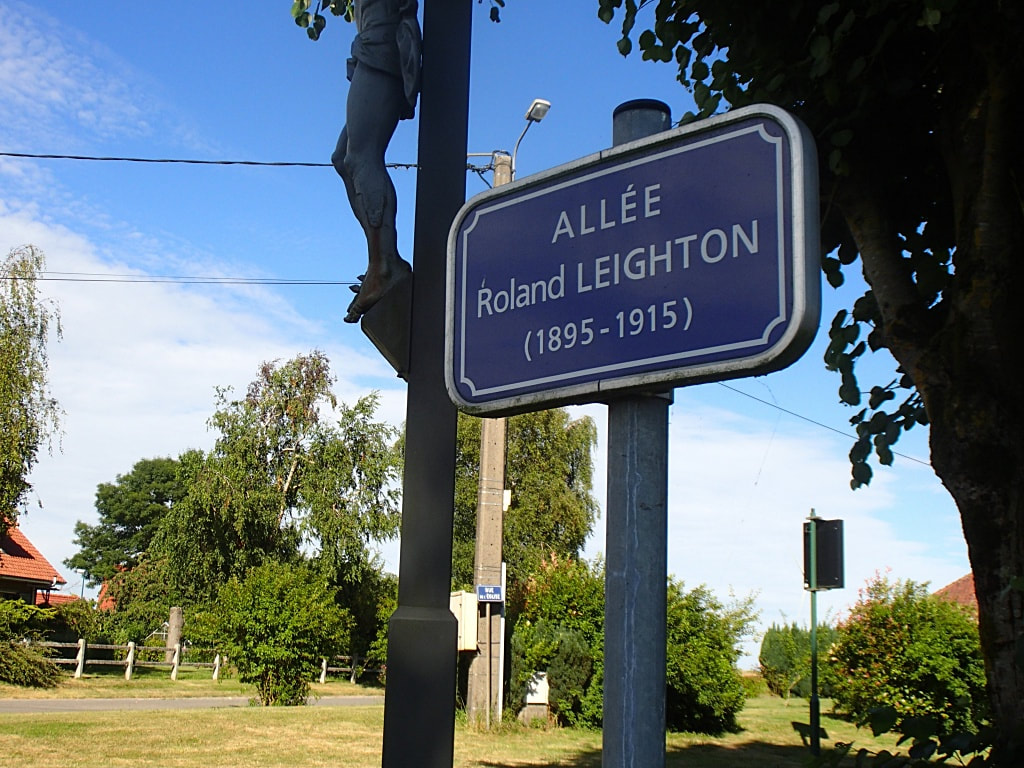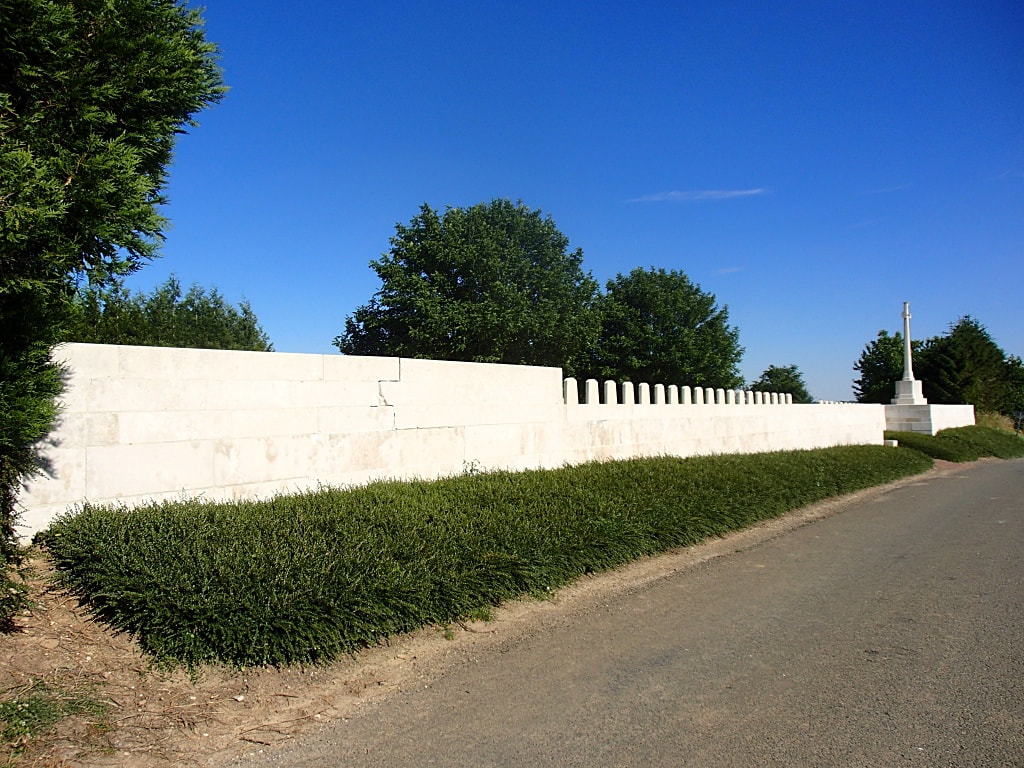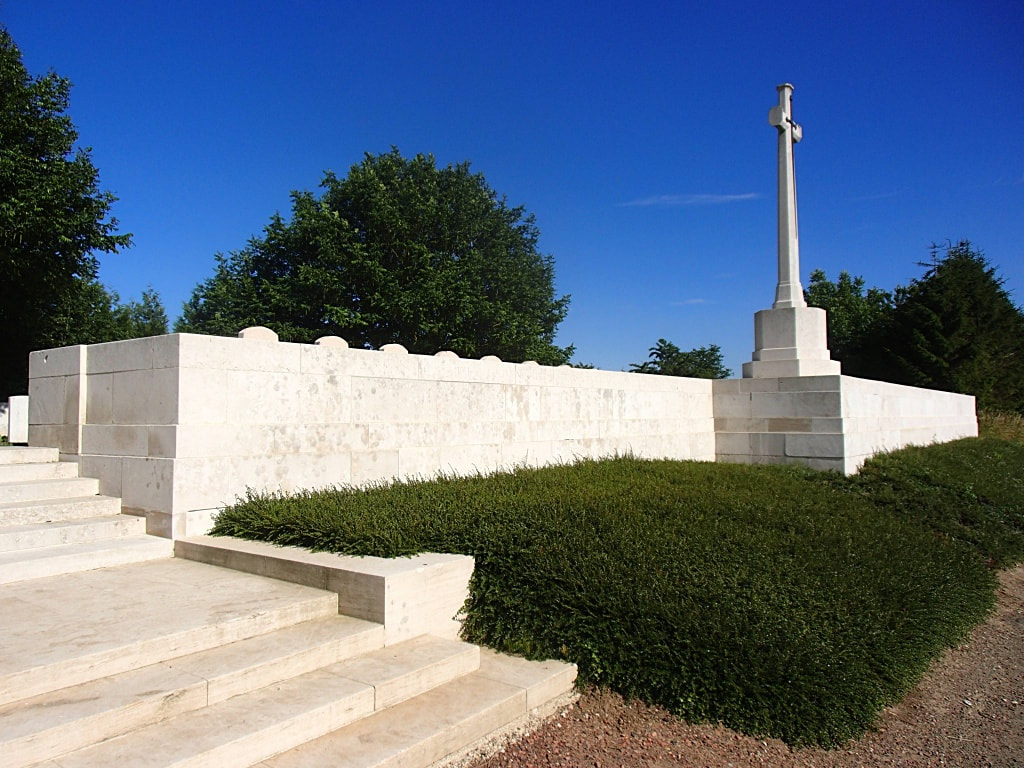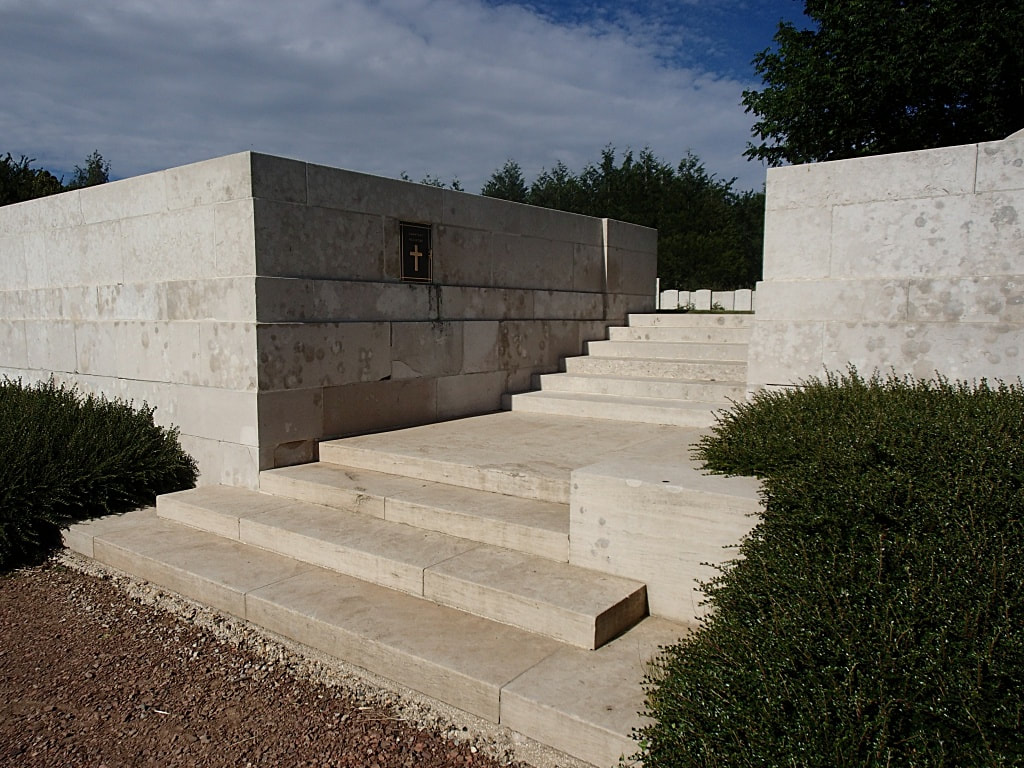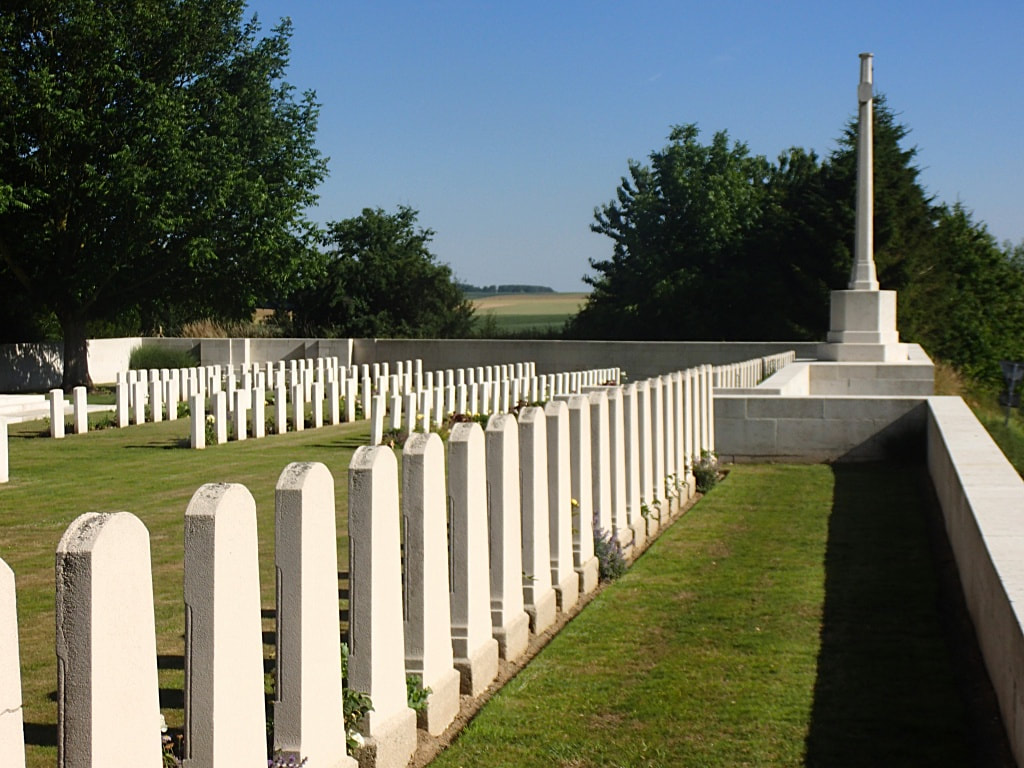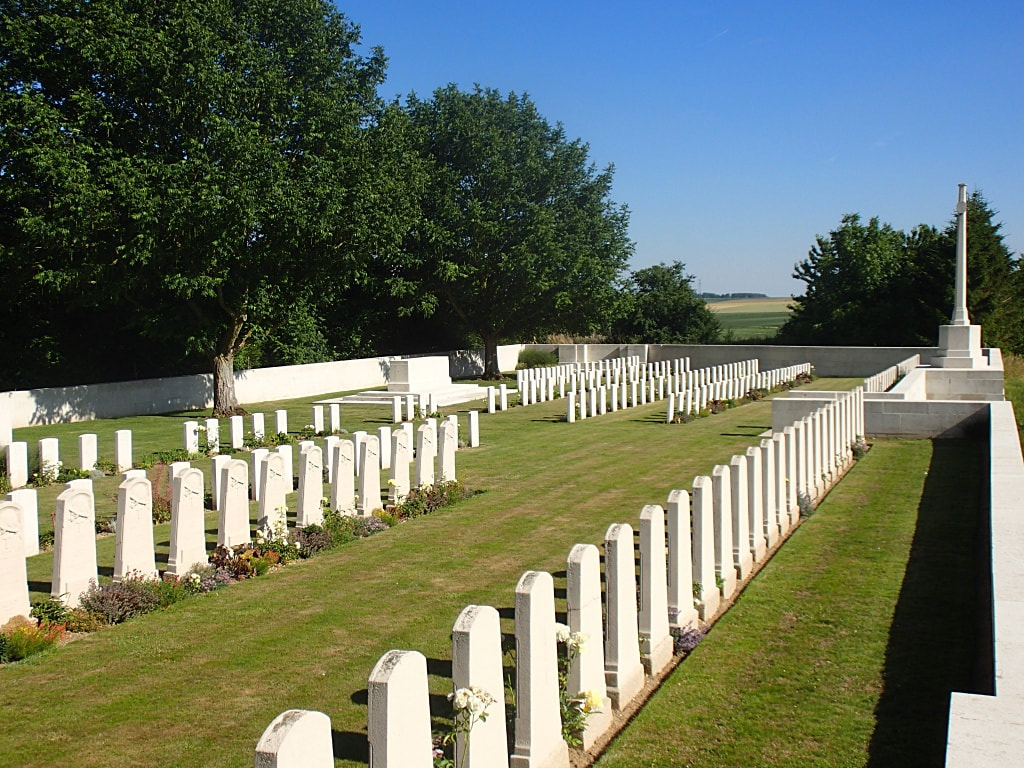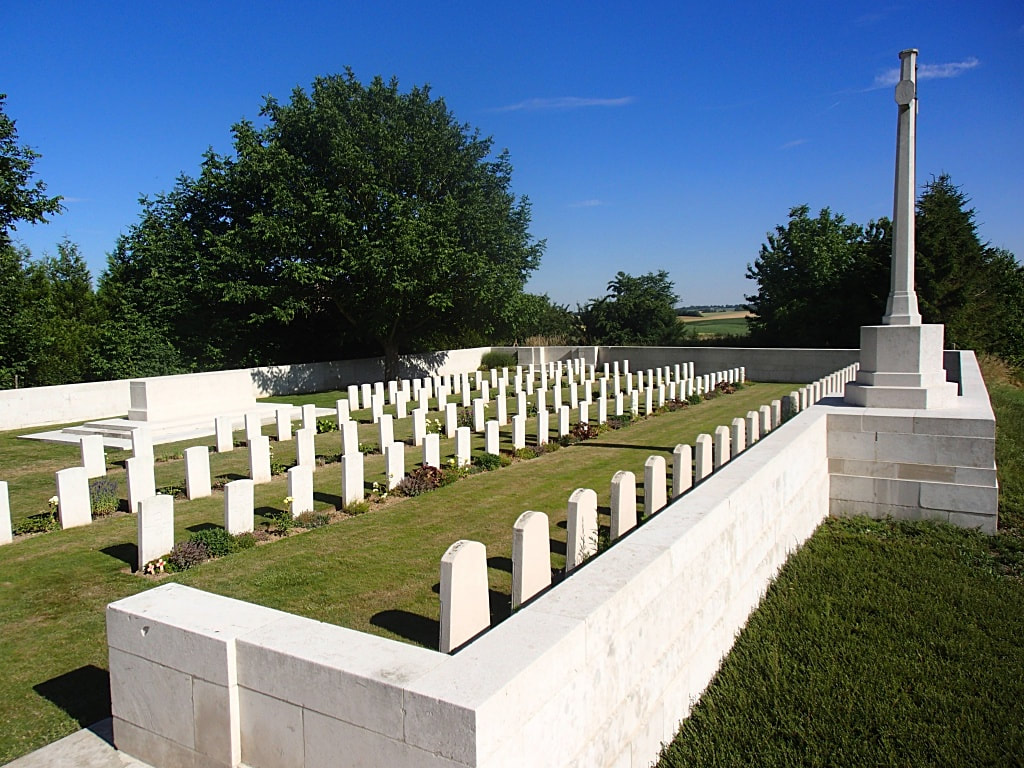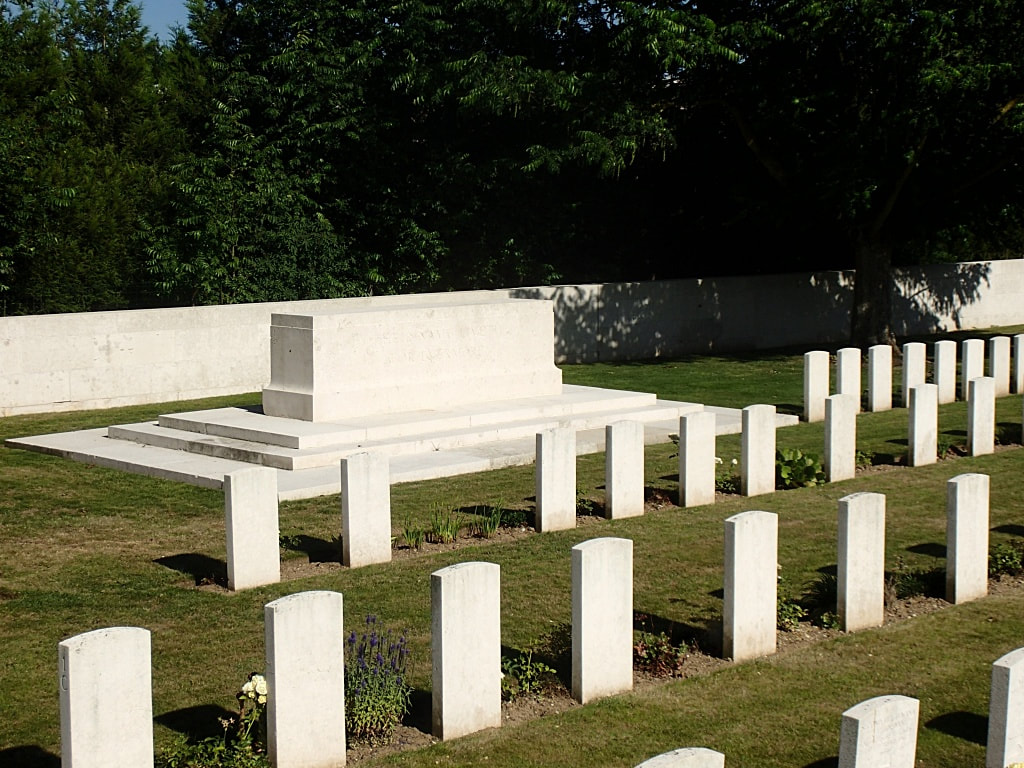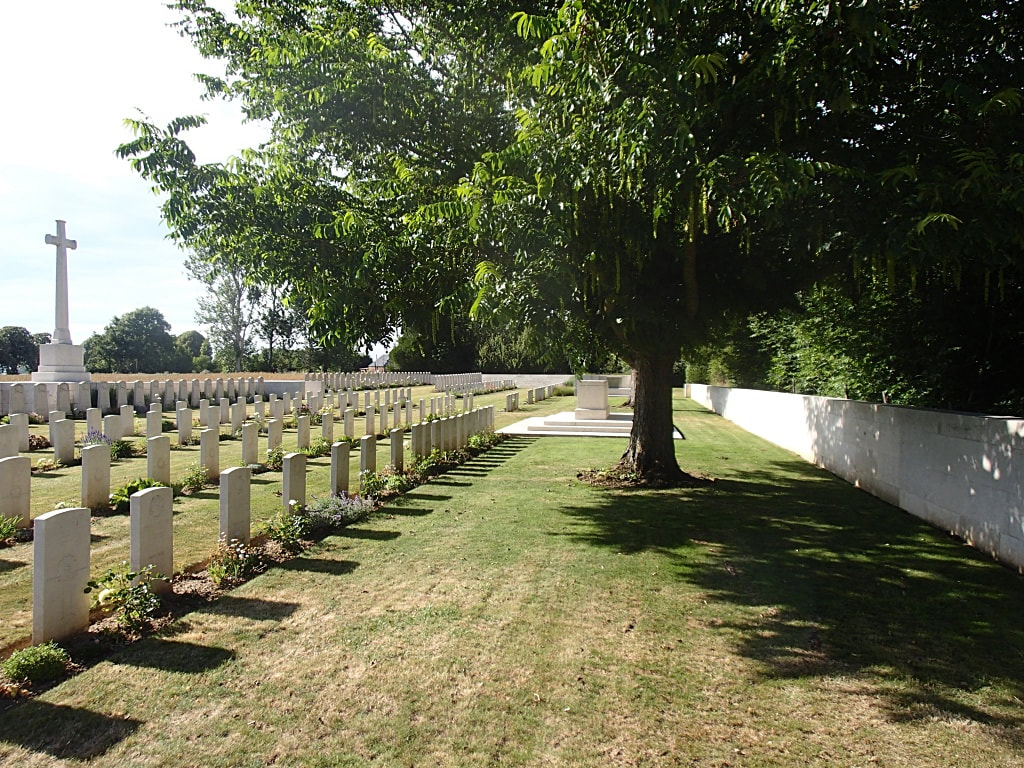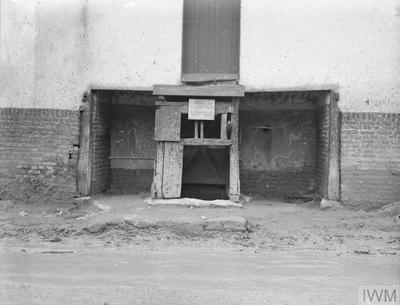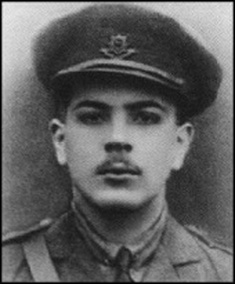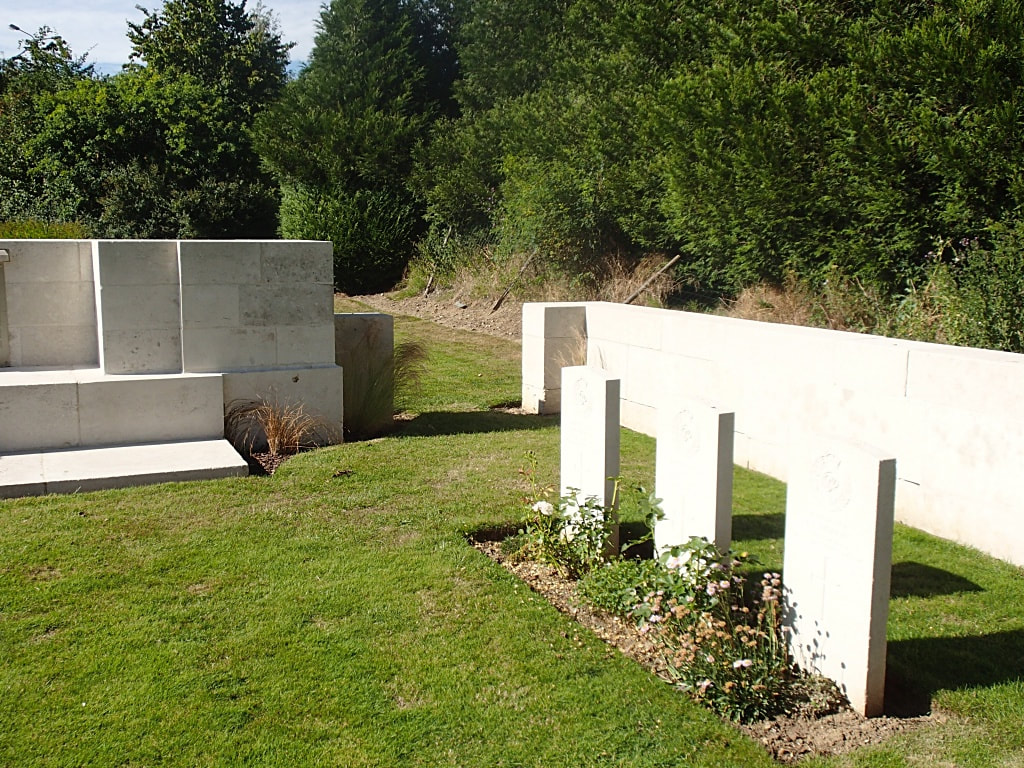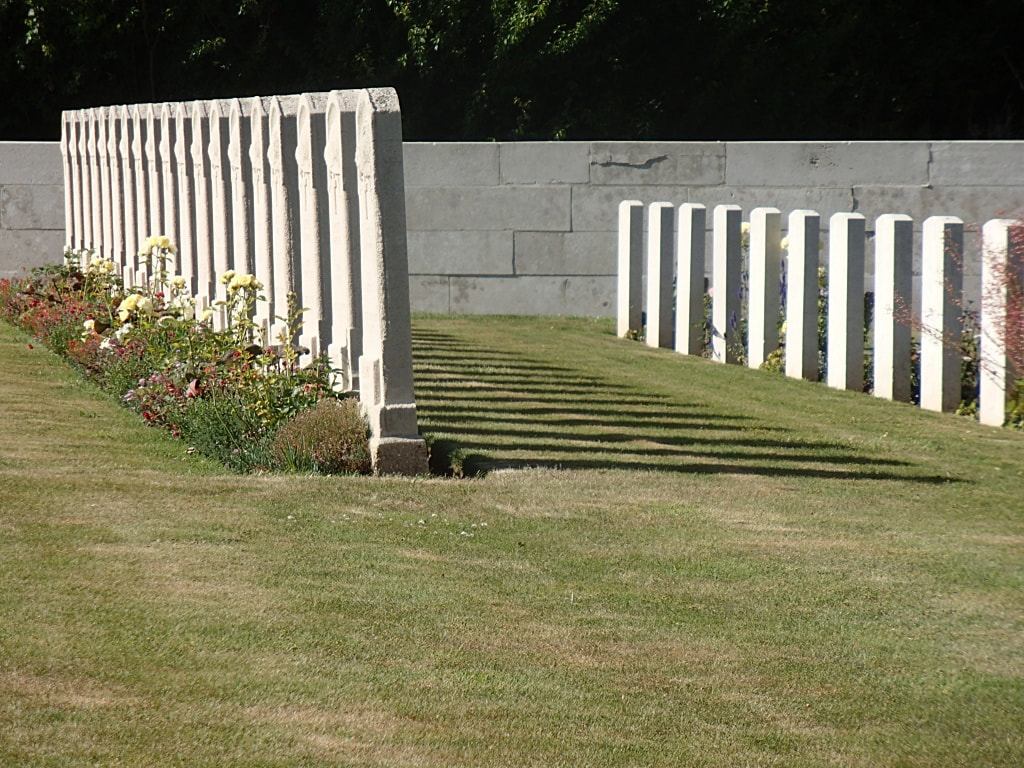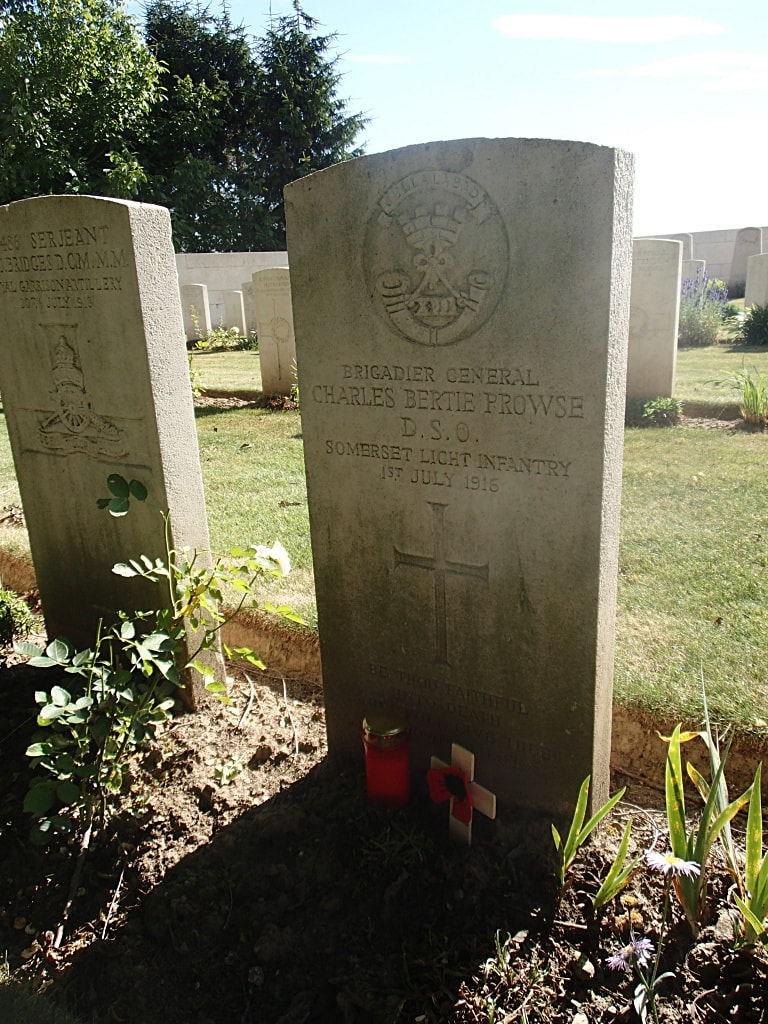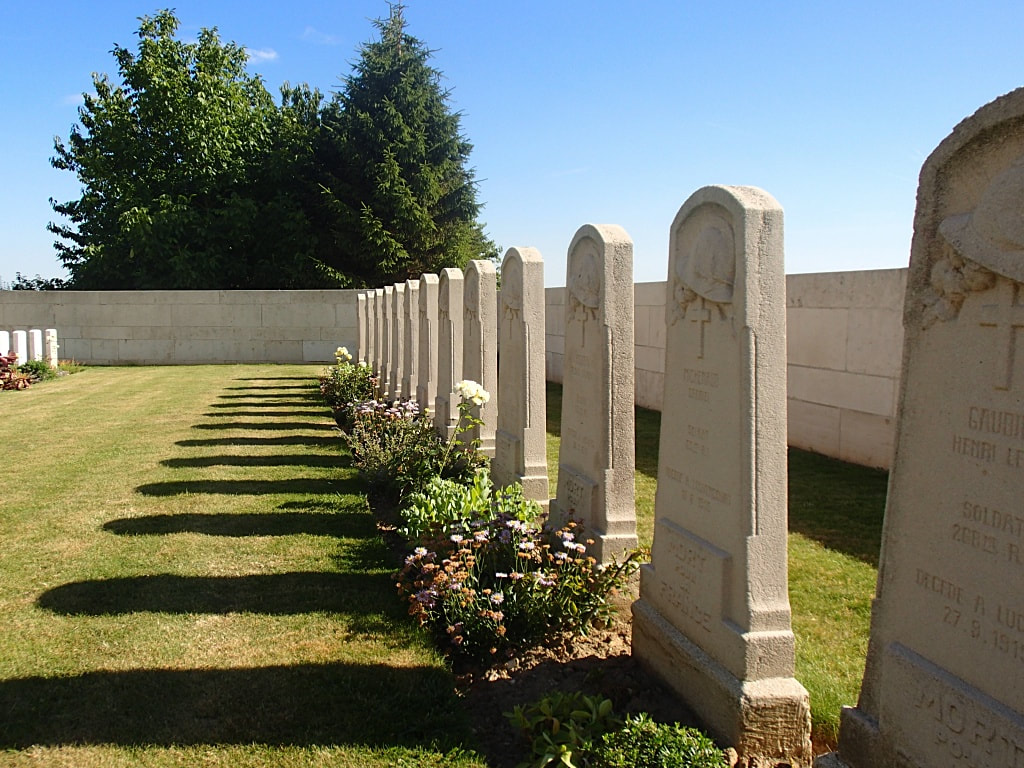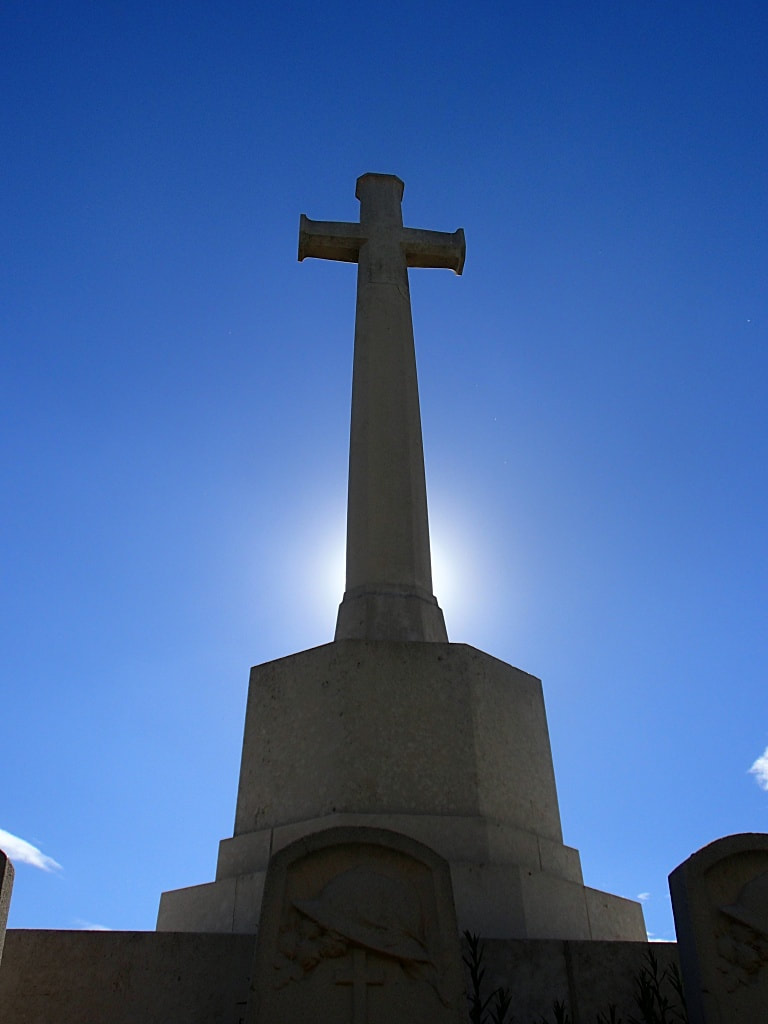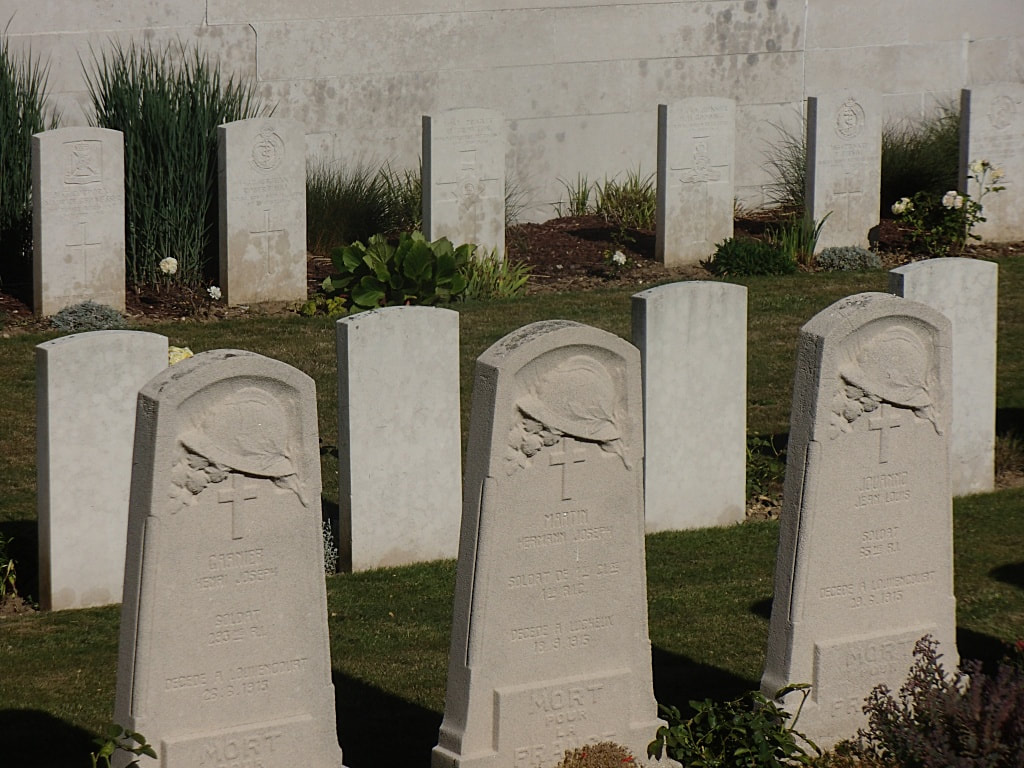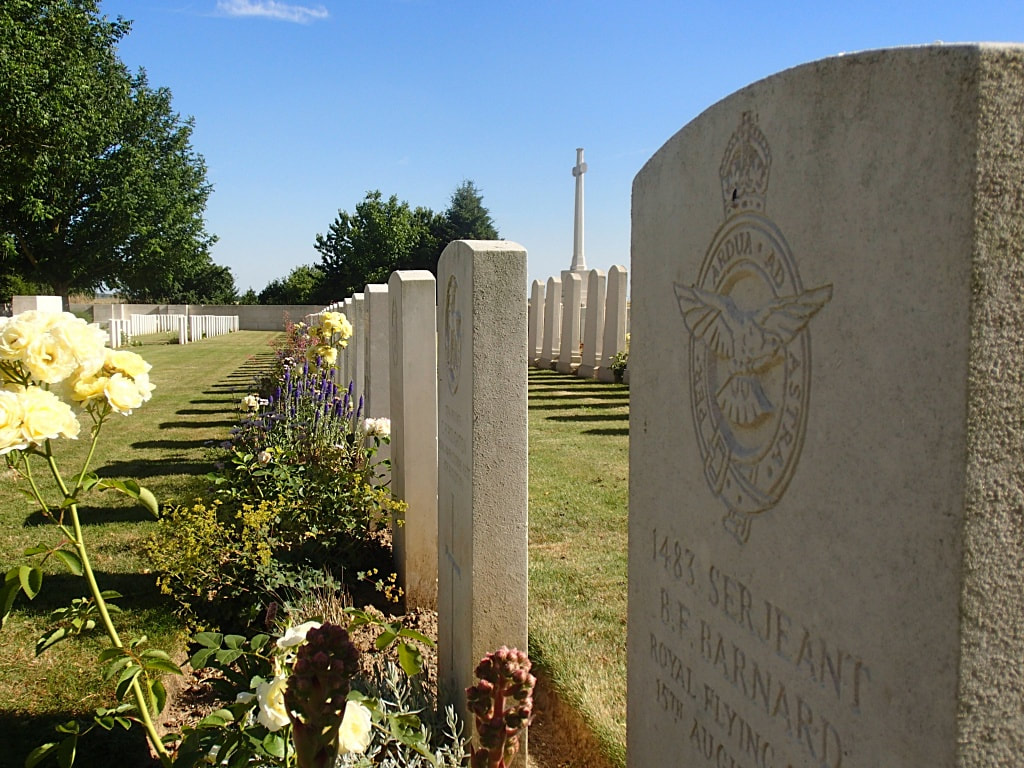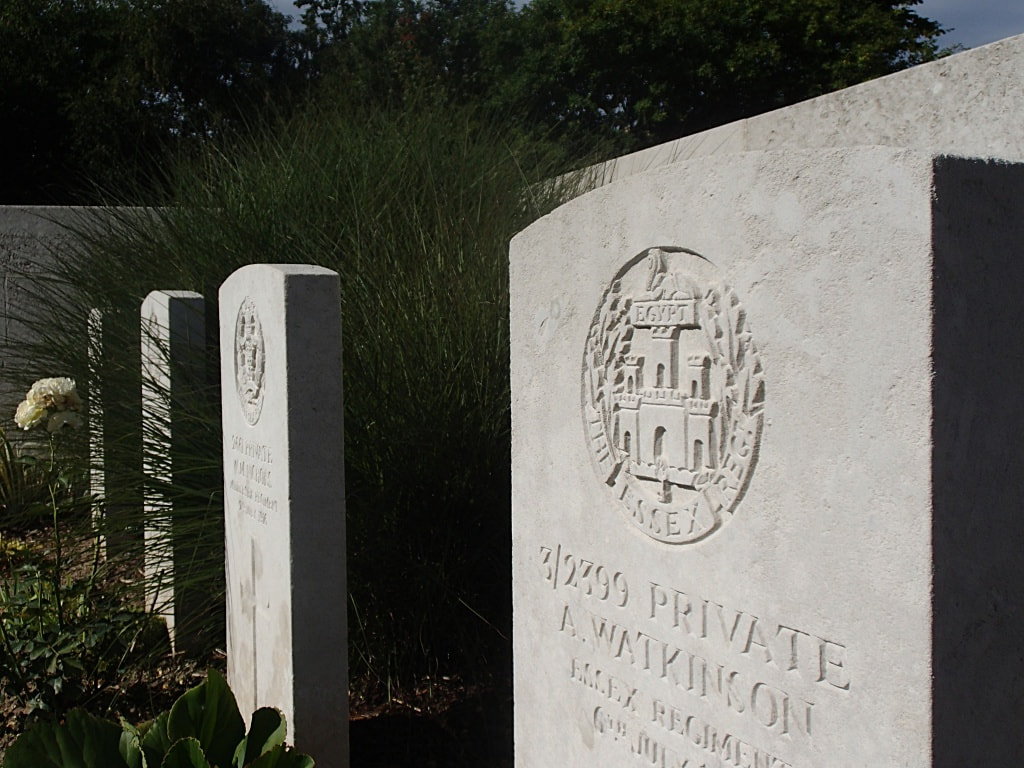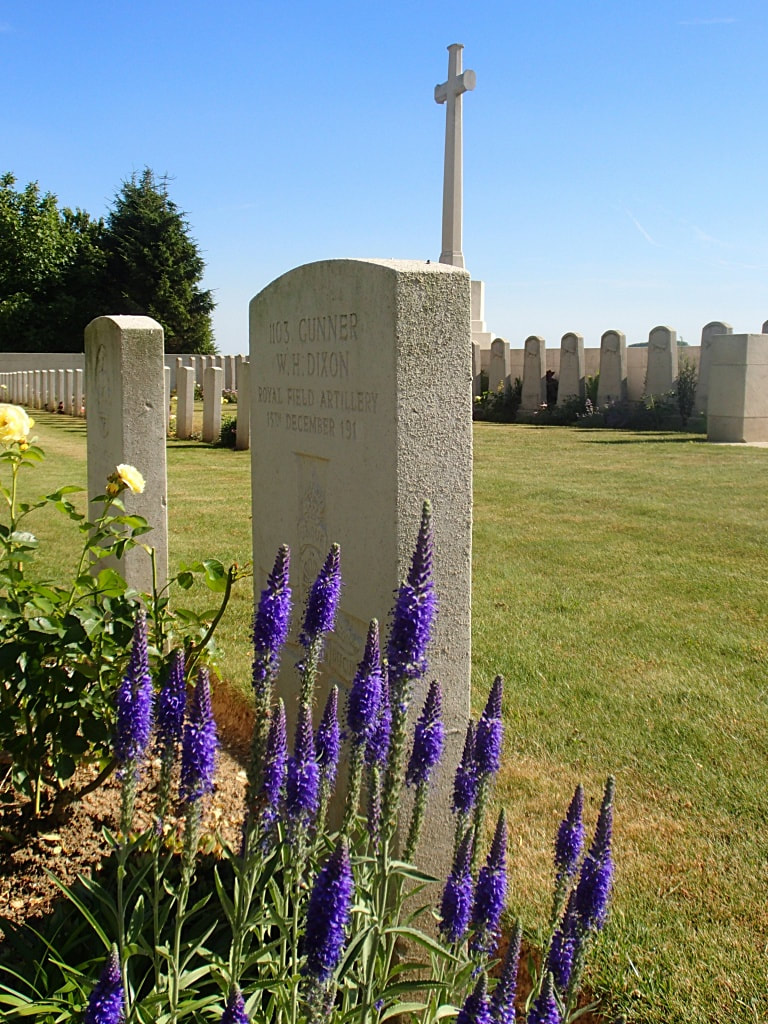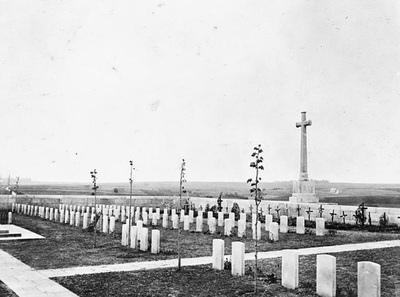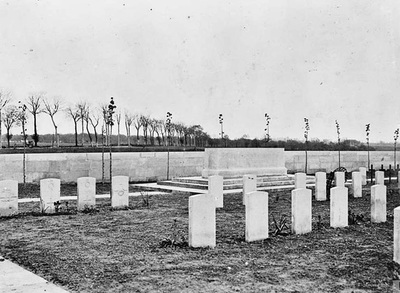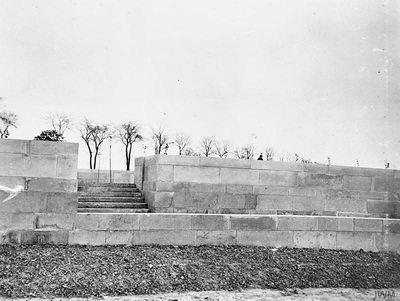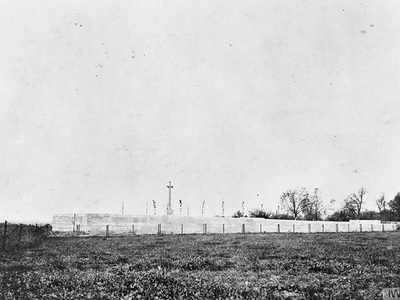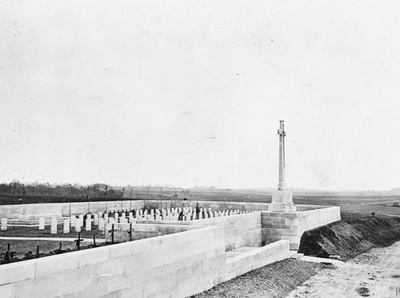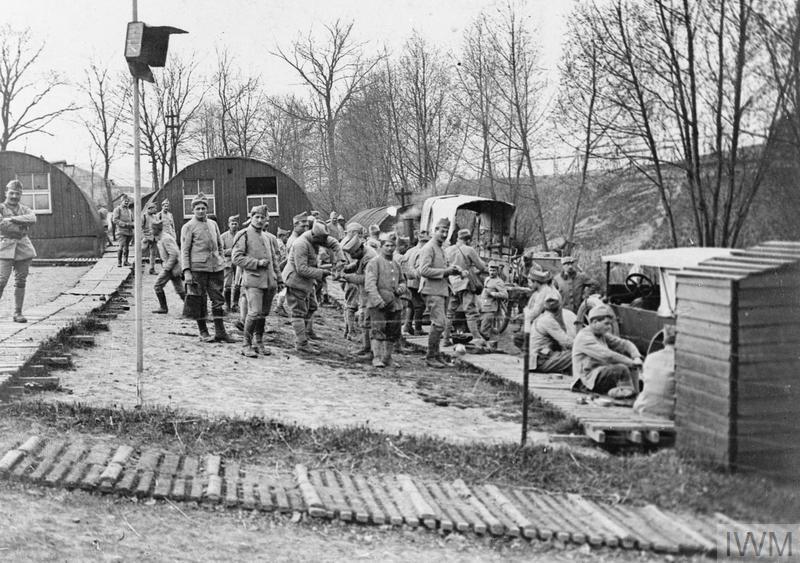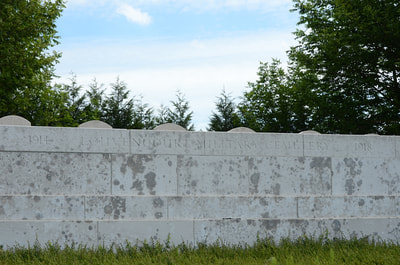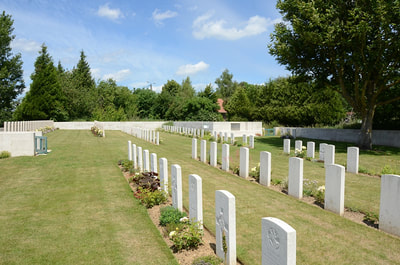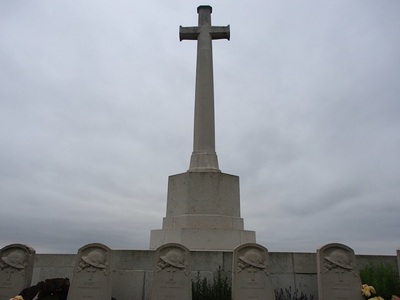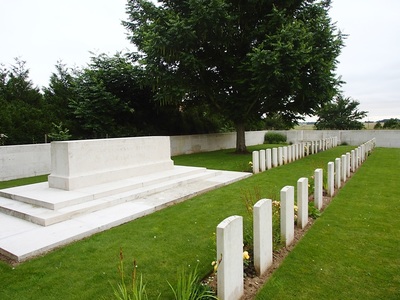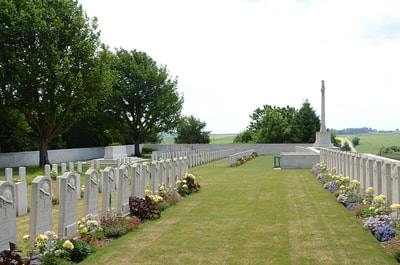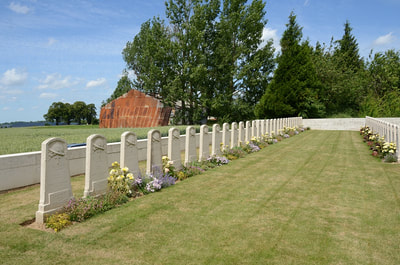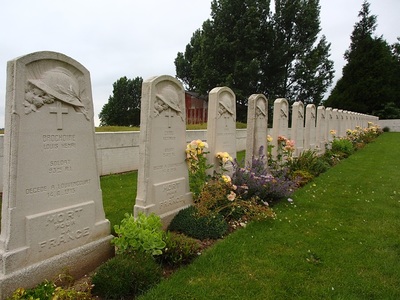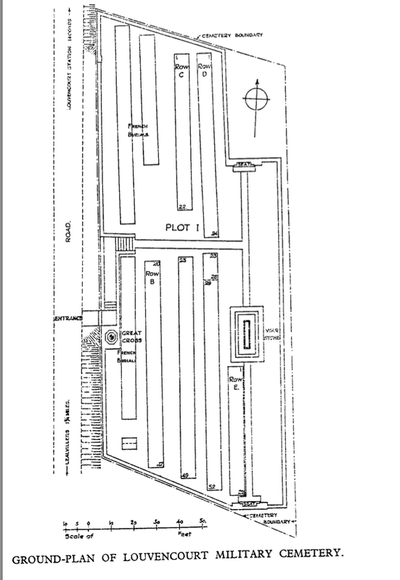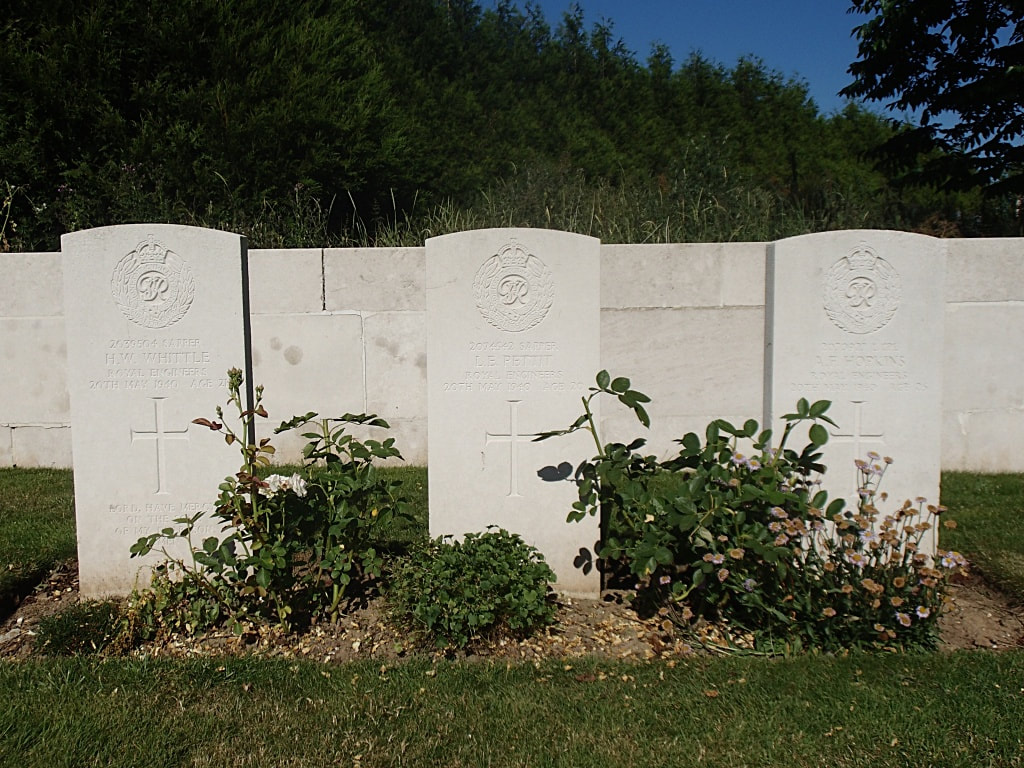LOUVENCOURT MILITARY CEMETERY
Somme
France
Location Information
Louvencourt is a village 13 kilometres south-east of Doullens on the road (D938) to Albert. The Cemetery is on the south-eastern side of the village.
Visiting Information
Wheelchair access to this site is possible, but maybe by an alternative entrance.
Historical Information
From July 1915 to August 1916, field ambulances were established at Louvencourt, which was nearly 10 kilometres behind the front line on 1 July 1916. Following the 1916 Somme offensive, these medical units moved further east and the cemetery was little used until the German advances of April 1918 pushed the Allied line back to its old position. The graves of 1918, in rows D and E, relate to the climax of that fighting. Eight of the graves in row E were brought from the Communal Cemetery Extension at Vauchelles-les-Authie, 1.6 Kms away on the road to Doullens. This extension was opened in July, 1916, for the Field Ambulances at Vauchelles, but no more than eight burials took place in it.
There are now 151 Commonwealth burials of the First World War in this cemetery and 76 French war graves dating from 1915. The cemetery also contains three graves from the Second World War.
Total Burials: 230.
World War One Identified Casualties: United Kingdom 135, New Zealand 17, Canada 1. Total 153.
World War Two Identified Casualties: United Kingdom 3. Total 3.
The cemetery, one of the first three Commission cemeteries to be built after the First World War, was designed by
Sir Reginald Blomfield and Charles Henry Holden
Louvencourt is a village 13 kilometres south-east of Doullens on the road (D938) to Albert. The Cemetery is on the south-eastern side of the village.
Visiting Information
Wheelchair access to this site is possible, but maybe by an alternative entrance.
Historical Information
From July 1915 to August 1916, field ambulances were established at Louvencourt, which was nearly 10 kilometres behind the front line on 1 July 1916. Following the 1916 Somme offensive, these medical units moved further east and the cemetery was little used until the German advances of April 1918 pushed the Allied line back to its old position. The graves of 1918, in rows D and E, relate to the climax of that fighting. Eight of the graves in row E were brought from the Communal Cemetery Extension at Vauchelles-les-Authie, 1.6 Kms away on the road to Doullens. This extension was opened in July, 1916, for the Field Ambulances at Vauchelles, but no more than eight burials took place in it.
There are now 151 Commonwealth burials of the First World War in this cemetery and 76 French war graves dating from 1915. The cemetery also contains three graves from the Second World War.
Total Burials: 230.
World War One Identified Casualties: United Kingdom 135, New Zealand 17, Canada 1. Total 153.
World War Two Identified Casualties: United Kingdom 3. Total 3.
The cemetery, one of the first three Commission cemeteries to be built after the First World War, was designed by
Sir Reginald Blomfield and Charles Henry Holden

Captain
Henry Begg
2nd/1st Highland Field Ambulance, Royal Army Medical Corps
14th November 1916, aged 35.
Plot 1. E. 5.
Son of George and Isabella Begg, of Mains of Druminnor, Rhynie, Aberdeenshire, Scotland.
Henry Begg
2nd/1st Highland Field Ambulance, Royal Army Medical Corps
14th November 1916, aged 35.
Plot 1. E. 5.
Son of George and Isabella Begg, of Mains of Druminnor, Rhynie, Aberdeenshire, Scotland.

47567 Private
Samuel Bird
2nd Bn. Auckland Regiment, N.Z.E.F.
9th May 1918, aged 38.
Plot 1. D. 42.
Son of Samuel and Jane Bird, of 96, Swins Gate, Kimberley, Notts.
Samuel Bird
2nd Bn. Auckland Regiment, N.Z.E.F.
9th May 1918, aged 38.
Plot 1. D. 42.
Son of Samuel and Jane Bird, of 96, Swins Gate, Kimberley, Notts.
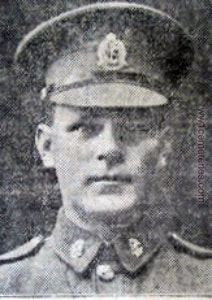
39759 Corporal
Axel Bang Christensen
1st Bn. New Zealand Rifle Brigade
10th May 1918, aged 27.
Plot 1. D. 43.
Son of Jorgen and Jorgine Christensen, of 66, King Street, Sydenham, Christchurch, New Zealand. Clerk, Public Trust Office, Wellington.
Axel Bang Christensen
1st Bn. New Zealand Rifle Brigade
10th May 1918, aged 27.
Plot 1. D. 43.
Son of Jorgen and Jorgine Christensen, of 66, King Street, Sydenham, Christchurch, New Zealand. Clerk, Public Trust Office, Wellington.
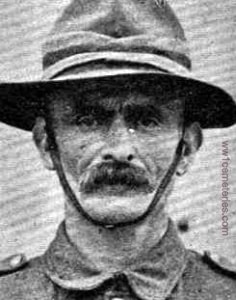
51300 Private
Willie Henry Clark
1st Bn. Wellington Regiment, N.Z.E.F.
21st April 1918, aged 44.
Plot 1. D. 24.
Son of Edward Saunders and Suzan Clark, of New Zealand.
Willie Henry Clark
1st Bn. Wellington Regiment, N.Z.E.F.
21st April 1918, aged 44.
Plot 1. D. 24.
Son of Edward Saunders and Suzan Clark, of New Zealand.

6/2105 Serjeant
Alexander Cruickshank, M. M.
1st Bn. Canterbury Regiment, N.Z.E.F.
26th May 1918, aged 24.
Plot 1. D. 50.
Son of Mr. J. and Mrs. B. Cruickshank, of North Otago, New Zealand.
Alexander Cruickshank, M. M.
1st Bn. Canterbury Regiment, N.Z.E.F.
26th May 1918, aged 24.
Plot 1. D. 50.
Son of Mr. J. and Mrs. B. Cruickshank, of North Otago, New Zealand.
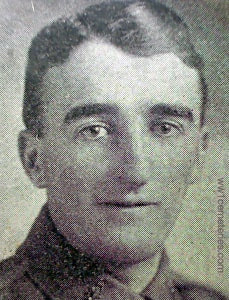
24/431 Serjeant
Peter Michael Gaffaney, M. M.
2nd Bn. New Zealand Rifle Brigade
5th April 1918, aged 24.
Plot 1. D. 21.
Son of Francis and Katherine Gaffaney, of Dunedin, New Zealand.
Peter Michael Gaffaney, M. M.
2nd Bn. New Zealand Rifle Brigade
5th April 1918, aged 24.
Plot 1. D. 21.
Son of Francis and Katherine Gaffaney, of Dunedin, New Zealand.
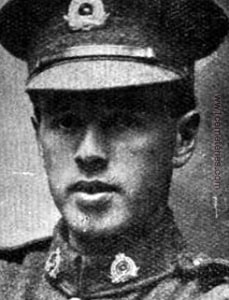
30573 Private
Leon Geyger
1st Bn. Wellington Regiment, N.Z.E.F.
2nd May 1918, aged 24.
Plot 1. D. 39.
Son of Thomas and Mary Geyger, of 1, Kelvin Grove, Wellington, New Zealand.
Leon Geyger
1st Bn. Wellington Regiment, N.Z.E.F.
2nd May 1918, aged 24.
Plot 1. D. 39.
Son of Thomas and Mary Geyger, of 1, Kelvin Grove, Wellington, New Zealand.

38034 Private
Herbert Henry Kells
1st Bn. Wellington Regiment, N.Z.E.F.
21st May 1918, aged 29.
Plot 1. D. 48.
Son of Robert James and Mary Ann Kells, of 9, Baden Road, Kilbimie, Wellington, New Zealand.
Herbert Henry Kells
1st Bn. Wellington Regiment, N.Z.E.F.
21st May 1918, aged 29.
Plot 1. D. 48.
Son of Robert James and Mary Ann Kells, of 9, Baden Road, Kilbimie, Wellington, New Zealand.
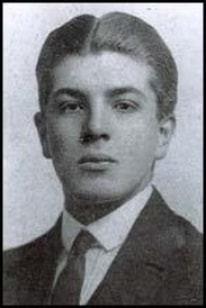
Lieutenant
Roland Aubrey Leighton
1st/7th Bn. Worcestershire Regiment
23rd December 1915, aged 20.
Plot 1. Row B. Grave 20.
Son of Robert and Marie Connor Leighton. Postmaster of Merton College, Oxford.
His headstone bears the inscription; "Goodnight, Though Life And All Take Flight, Never Good-Bye." (Variation on the poem 'A Wink From Hesper' by William Ernest Henley.)
Roland Aubrey Leighton
1st/7th Bn. Worcestershire Regiment
23rd December 1915, aged 20.
Plot 1. Row B. Grave 20.
Son of Robert and Marie Connor Leighton. Postmaster of Merton College, Oxford.
His headstone bears the inscription; "Goodnight, Though Life And All Take Flight, Never Good-Bye." (Variation on the poem 'A Wink From Hesper' by William Ernest Henley.)
|
Roland Aubrey Leighton (27 March 1895 – 23 December 1915) was a British poet and soldier, immortalised in Vera Brittain's memoir, Testament of Youth.
Leighton was a prizewinning classical scholar at Uppingham School (a school contemporary remembers Leighton using a wheelbarrow to recover his haul from the 1914 annual school prize giving). He became a close friend of Vera Brittain's brother, Edward and Victor Richardson. At Uppingham he was acting cadet officer in the Junior Division, Officers Training Corps. Mrs. Leighton called the friends "the three musketeers". Roland developed an interest in reading poetry, and writing his own verse whilst at Uppingham. He subsequently used the medium of poetry to express his burgeoning love for Vera Brittain, Edward's sister, who became his fiancée in August 1915. On leaving Uppingham, Leighton was awarded the Classical Postmastership at Merton College, Oxford. However, when the Great War broke out he sought a place in the Royal Navy, but was turned down due to short-sightedness. After he procured a "general fitness" certificate from a local GP which did not make reference to his myopia, he received a commission in the Norfolk Regiment on 21 October 1914, and was promoted a lieutenant with the Worcestershire Regiment on 26 March 1915. Leighton served with the Worcestershire Regiment in France, and was engaged in the fighting around Ypres in Belgium. He converted to Roman Catholicism while at the Front in 1915, a course he had been considering before the war. He was initially highly motivated to join the fighting by ideas of patriotism and duty, but an analysis of his letters reveals that he quickly became unhappy and disillusioned by his experiences at the front.He died of wounds on 23 December 1915 at the age of 20 (although his gravestone incorrectly states that he was 19). He had been shot by a sniper, and sustained a catastrophic abdominal and spinal injury, while inspecting wire in front of a trench at Hébuterne, France. His last words were "They got me in the stomach and it's bad". |
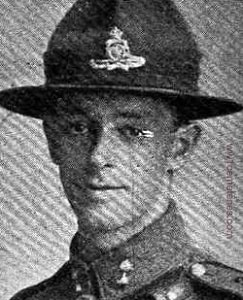
2/2667 Gunner
Vernard Clifton Liddell
15th Heavy Bty. New Zealand Field Artillery
24th April 1918, aged 24.
Plot 1. D. 23.
Son of James and Kate Liddell, of Palmerston North, New Zealand.
Vernard Clifton Liddell
15th Heavy Bty. New Zealand Field Artillery
24th April 1918, aged 24.
Plot 1. D. 23.
Son of James and Kate Liddell, of Palmerston North, New Zealand.
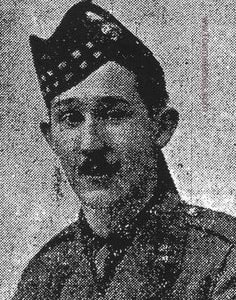
Second Lieutenant
Thomas William Robertson Neill
9th Bn. Royal Scots Fusiliers, attd. 1st Bn. Royal Dublin Fusiliers
3rd July 1916, aged 21.
Plot 1. B. 25.
Son of the late John and Mary Neill, of 60, Ardrossan Road, Saltcoats.
Thomas William Robertson Neill
9th Bn. Royal Scots Fusiliers, attd. 1st Bn. Royal Dublin Fusiliers
3rd July 1916, aged 21.
Plot 1. B. 25.
Son of the late John and Mary Neill, of 60, Ardrossan Road, Saltcoats.
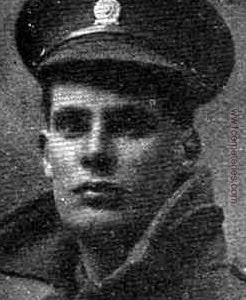
56825 Rifleman
Frank Leslie Newell
"H" Coy. 1st Bn. New Zealand Rifle Brigade
2nd May 1918, aged 20.
Plot 1. D. 40.
Son of Frank and Edith Newell, of New Plymouth, New Zealand.
Frank Leslie Newell
"H" Coy. 1st Bn. New Zealand Rifle Brigade
2nd May 1918, aged 20.
Plot 1. D. 40.
Son of Frank and Edith Newell, of New Plymouth, New Zealand.
Images of the cemetery post war - ©Jeremy Gordon-Smith (Click to enlarge)
Shot at Dawn
10758 Rifleman Frederick Martin Barratt, 7th Battalion, Kings Royal Rifle Corps, he was executed for desertion on 10th July 1917, aged 23. Plot 1. D. 20. Son of Rosena Elizabeth Hull, of Fulham. A young Regular, he deserted having the previous year been sentenced to 3 years’ penal servitude for sleeping on his post. At trial, Barratt stated that his constitution had never recovered from being wounded & left unattended for 5 days when serving with the BEF; & that he became terrified when under fire. (Putkowski,pp. 180-181)
43665 Private Harry MacDonald, 12th Battalion, West Yorkshire Regiment (Prince of Wales's Own), he was executed for desertion on 4th November 1916, aged 34. Plot 1. D. 17. Son of the late Robert and Margaret MacDonald, of Cumberland. Served in the South African Campaign. He had served in Gallipoli, from where he was invalided home. During convalescence, McDonald’s wife became pregnant before falling ill; & following refusal of an extension of leave, he went absent. After his arrest, he was sent to France, where, when serving on the Somme, he was buried by the explosion of an enemy shell. Following brief medical treatment — whether for shell-shock, or for wounds — McDonald was returned to his unit, only to be sentenced to Field Punishment No 2 for absenting himself a month later. In September 1916, he reported sick, but ‘medicine & duty’ were ordered, & he returned to the trenches. However, McDonald soon went absent again on ‘a very quiet day’ in the front line trenches. He was arrested a month later in Boulogne, missing his identifying badges & using a fictitious identity. At trial the Brigade Commander ordered a medical examination — which disclosed nothing untoward — & at review McDonald was condemned by the Divisional Commander as worthless & of no fighting value. (Putkowski, pp. 129-131)
10758 Rifleman Frederick Martin Barratt, 7th Battalion, Kings Royal Rifle Corps, he was executed for desertion on 10th July 1917, aged 23. Plot 1. D. 20. Son of Rosena Elizabeth Hull, of Fulham. A young Regular, he deserted having the previous year been sentenced to 3 years’ penal servitude for sleeping on his post. At trial, Barratt stated that his constitution had never recovered from being wounded & left unattended for 5 days when serving with the BEF; & that he became terrified when under fire. (Putkowski,pp. 180-181)
43665 Private Harry MacDonald, 12th Battalion, West Yorkshire Regiment (Prince of Wales's Own), he was executed for desertion on 4th November 1916, aged 34. Plot 1. D. 17. Son of the late Robert and Margaret MacDonald, of Cumberland. Served in the South African Campaign. He had served in Gallipoli, from where he was invalided home. During convalescence, McDonald’s wife became pregnant before falling ill; & following refusal of an extension of leave, he went absent. After his arrest, he was sent to France, where, when serving on the Somme, he was buried by the explosion of an enemy shell. Following brief medical treatment — whether for shell-shock, or for wounds — McDonald was returned to his unit, only to be sentenced to Field Punishment No 2 for absenting himself a month later. In September 1916, he reported sick, but ‘medicine & duty’ were ordered, & he returned to the trenches. However, McDonald soon went absent again on ‘a very quiet day’ in the front line trenches. He was arrested a month later in Boulogne, missing his identifying badges & using a fictitious identity. At trial the Brigade Commander ordered a medical examination — which disclosed nothing untoward — & at review McDonald was condemned by the Divisional Commander as worthless & of no fighting value. (Putkowski, pp. 129-131)



